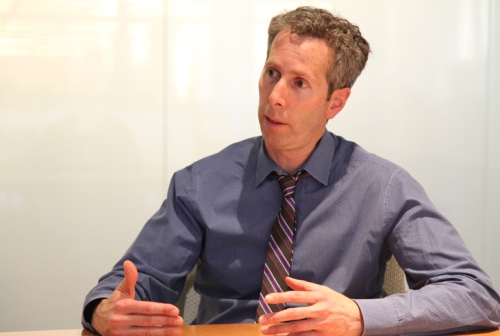
Gensler
University Architect Steve Wiesenthal, who came to Chicago in 2008 from the University of California San Francisco (via the University of Pennsylvania Health System and Venturi Scott Brown & Associates), will be departing at the end of this month. The University is conducting a search for his replacement.
He will be sorely missed. While I did not laud all of his decisions, I noted in this blog that he was largely doing an excellent job. As a planner, he was dedicated to enriching campus life by enhancing the pedestrian experience of campus through projects like the 58th Street pedestrian paths, the Midway crossings, demolishing the old Post Office building, and carving out a portal from the Admin Building. As an architect, he made it clear that the University’s new architecture would not be conservative in style (as perhaps some would have hoped), embracing emphatically modern architecture over historicism. At the same time, he demonstrated a sensitivity to the University and neighborhood’s historic buildings as well as the concerns of the non-University community. The best projects of his term encapsulate these broad objectives: Mansueto Library, Saieh Hall, the Logan Center, and Gordon Parks Arts Hall (and the various landscape and quadrangles projects).
He also was part of the team that took on the ambitious 53rd Street revitalization project, possibly inspired by Penn’s very successful efforts at improving its West Philadelphia neighborhood. While I have largely stayed quiet about 53rd Street developments because this blog is not about commercial real estate, I am very much in favor of them.
The one time I heard him speak, he told a story from his very first day on the job. A trustee called him and barked, “Your job is to keep another Legoretta disaster from happening!” (referring to the Mexican-pomo trainwreck that is Max Palevsky Commons.) In this narrow but critical task he was successful. During a time of massive spending on campus infrastructure, it was no small feat to ensure that no large eyesores were built. His greatest achievement, however, was administrative. He was the first University Architect to be given–probably due to his advocacy–a bigger role in high-level administrative decision-making. His chief legacy, thus, is a greater emphasis on architecture and an acknowledgement of its importance within University leadership.